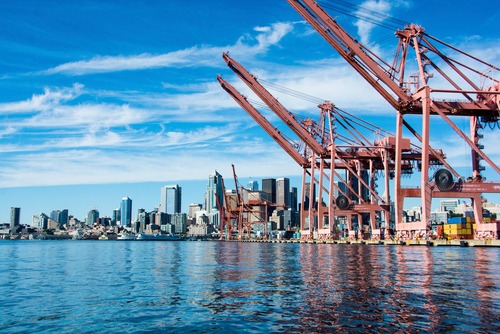
On Oct. 26, the Port of Seattle Commission voted to accelerate its emission reduction efforts, setting the new goal of being net zero or better for Port-owned emissions by 2040.
The new goal accelerates the port’s efforts by 10 years. Additionally, the port set a new goal for its industries operating at its facilities to be carbon neutral or better by 2050.
“The Port’s actions today reflect our recognition of this urgency. Along with our partners at the Northwest Seaport Alliance (NWSA), we’re making significant investments in green infrastructure, such as shore power, to enable our tenants to meet their climate goals as well,” Port of Seattle Commission President Fred Felleman said. “As a public port, these investments are not just the right thing to do, but they also give us a competitive advantage because businesses are increasingly seeking ways to reduce their emissions.”
The new goals were timed to coincide with the Conference of Parties 26 (COP 26) meeting in Glasgow, Scotland.
As part of its emphasis on decarbonization, the Port also announced it would participate in new studies of renewable hydrogen as a future vehicle and maritime fuel source, as well as a new partnership with Seattle City Light (SCL) and the NWSA to focus on electrification of the waterfront. The commission also announced it had joined a global maritime shipping decarbonization coalition called Getting to Zero.
“Our agreement with Seattle City Light signals how serious we are about leading change,” said Port of Seattle Commissioner and Sustainability, Environment, and Climate Committee Co-Chair Peter Steinbrueck. “Powering our waterfront with clean electricity is a new way of doing business. This agreement puts us all on the same page working for that change.”
The new goals would mean that emissions directly and indirectly caused by the Port would decrease by 50 percent of emission levels in 2005 by the year 2030 and be net zero by 2040. Emissions influenced by the Port would be at 50 percent of 2007 levels by 2030 and net zero by 2050.
An inventory in 2020 found that greenhouse gas emissions from Port-controlled sources dropped 20 percent last year. While COVID-19 decreased Port-controlled emissions from some sources and increases in others, the expanded use of renewable natural gas, renewable diesel, and renewable electricity drove 60 percent of the emissions decline, the Port said.